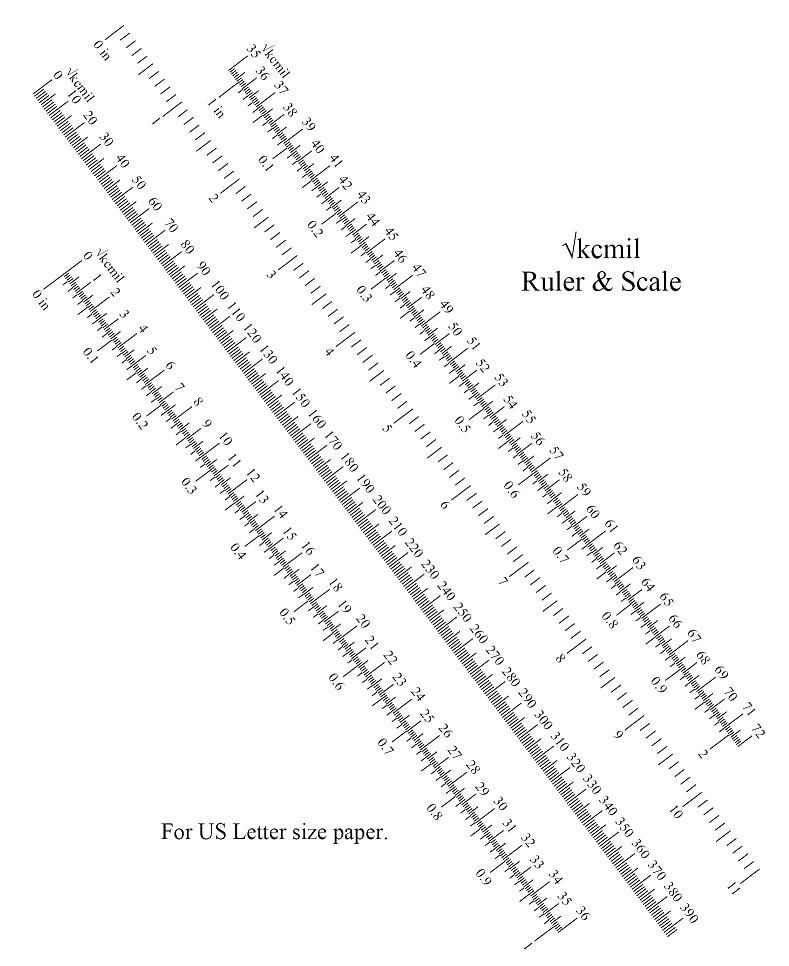Area of 1 circular mil = d^2
Area of circle = 0.25*Pi*d^2 => d^2 = Area * 4 / Pi (mils^2)
Thus, 1 cmil = d^2 = Area * 4 / Pi
Take your area in square mils times 4 and divided by Pi and you will get the cmil. 4/Pi = 1.273
Your second equation is correct.
Makes me pleased that we (UK) don't have such a complicated system.
You have AWG, circ mils, square mils.....etc.
From Wikipedia:
By definition, No. 36 AWG is 0.0050 inches in diameter, and No. 0000 is 0.4600 inches in diameter. The ratio of these diameters is 92, and there are 40 gauge sizes from No. 36 to No. 0000, or 39 steps. Using this common ratio, wire gauge sizes vary geometrically according to the following formula: The diameter of a No. n AWG wire is
d_n = 0.005~\mathrm{inch} \times 92 ^ \frac{36-n}{39} = 0.127~\mathrm{mm} \times 92 ^ \frac{36-n}{39}
or equivalently
d_n = e^ {-1.12436 - .11594 \times n}\ \mathrm{inch} = e^ {2.1104 - .11594 \times n}\ \mathrm{mm}
The gauge can be calculated from the diameter using
n = -39\log_{92} \left( \frac{d_{n}}{0.005~\mathrm{inch}} \right)+36 = -39\log_{92} \left( \frac{d_{n}}{0.127~\mathrm{mm}} \right)+36 [3]
and the cross-section area is
A_n = \frac{\pi}{4} d_n^2 = 0.000019635~\mathrm{inch}^2 \times 92 ^ \frac{36-n}{19.5} = 0.012668~\mathrm{mm}^2 \times 92 ^ \frac{36-n}{19.5},
Shame you can't copy and paste the symbols but I'm sure you get the point.
You guys really need to take on board SI.
It is SO much simpler.

And I say that on the basis that I'm old enough to have dealt with both Imperial and metric (SI) units.
All our conductor sizes are in mm^2. Busbar dimensions are in mm.
I don't have to convert between horsepower and kW, gallons and litres, pounds and kg etc.
Conveniently, one litre of water weighs one kg. I don't have to know that one horsepower is 550 ft-lb/sec. A tonne (metric ton to some) is 1000 kg.
All of the basic electrical units are defined using SI.
There is no Imperial equivalent for the Volt or the Amp.
And the OP would have been more like "What is the area of a 12mm by 50mm busbar? It's obviously 600mm^2 and a
very much simpler calculation.

